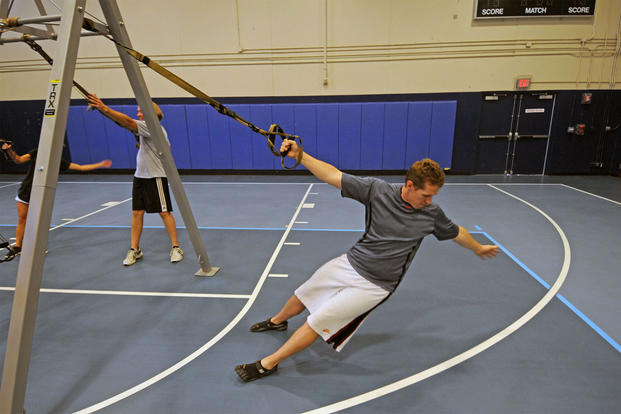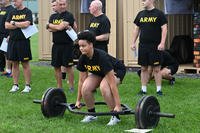When you’re an aging athlete, you start to feel the bumps and bruises of previous injuries and daily stresses, especially when you’re in a tactical profession. Being a “tactical athlete” or “industrial athlete” entails daily physical exertion and moderate to high levels of fitness for your own well-being -- and you need recovery days.
There are some basic tools of the trade that you should consider for your recovery, maintenance and mobility. Here is a list of things to do and people to learn from as you age while staying active in your profession and life:
Gray Cook
Gray, a physical therapist, created the Functional Movement Screen (FMS), a system of basic movements and balancing that test your ability to move your joints properly. I use it to see whether I am overtraining. I typically can pass it. However, when I start to fail a certain exercise in the FMS, like shoulder mobility or the leg lift that tests my balance on one leg, I tend to equate that with overtraining.
I need a couple of weeks of mobility days in the schedule to help me balance this out and pass this test. Also check out Cook's YouTube Channel to see his educational lecture on movement.
Kelly Starrett
Kelly runs a program called MobilityWOD.com. He also wrote a book called "Becoming a Supple Leopard," which teaches you how to be flexible and mobile while offering very innovative and creative ideas.
Randy Hetrick
Hetrick created the TRX suspension training program, which probably has saved my core and lower back as I have aged and is another way to build a very strong core without heavy weights or if previous injuries prevent certain activities. Check out Hetrick's YouTube channel.
Tools and videos: How to use them
Some of the tools that we use include TRX, foam rollers, lacrosse balls and tennis balls. The foam roller has changed many lives as far as being able to continue running, even with some slight tendinitis flareups. It enables you to “roll out” the pain and the inflammation somewhat to where you're still able to run with less pain, even no pain.
But with tendinitis, that pain always comes back when you're not doing anything. But that's when the foam roller can help. The tennis and lacrosse balls are smaller ways to roll out pain and tight muscles, similar to the foam roller. For more information, look into Myofascial Release. Check out Kelly Starrett’s YouTube Channel as a great resource for foam roller, lax and tennis ball exercises and more.
Density of foam rollers and balls
The foam roller initially was just a piece of foam, so it was a little more pliable and softer. The more you used them, the softer they got, so you had to get a new one every month if you were doing it correctly. They soon evolved into a PVC pipe with some rubber wrapped around it, so it added a little bit of cushion, but it stayed rigid. These will stay rigid for years, unlike the foam version of the roller.
With the lacrosse ball, you can get into hard-to-roll spots on your back or your foot. A tennis ball is a little easier version of the lacrosse ball, used the same way. Also consider stretching bands. These help to grab on to a limb and help you pull it back a little bit, especially if you can't grab it with your hands.
Other tools for recovery and maintenance health are ice baths or a swimming pool. Aqua jogging and water aerobics for 10-15 minutes is a great way to end a lifting or running workout. Treading and doing dynamic stretches in the water and the foam rollers, TRX and straps are really the tools of the trade for recovery and maintenance. You can add ice baths if you prefer, which will help with inflammation.
Stew Smith is a former Navy SEAL and fitness author certified as a Strength and Conditioning Specialist (CSCS) with the National Strength and Conditioning Association. Visit his Fitness eBook store if you’re looking to start a workout program to create a healthy lifestyle. Send your fitness questions to stew@stewsmith.com.
Want to Learn More About Military Life?
Whether you're thinking of joining the military, looking for fitness and basic training tips, or keeping up with military life and benefits, Military.com has you covered. Subscribe to Military.com to have military news, updates and resources delivered directly to your inbox.


















